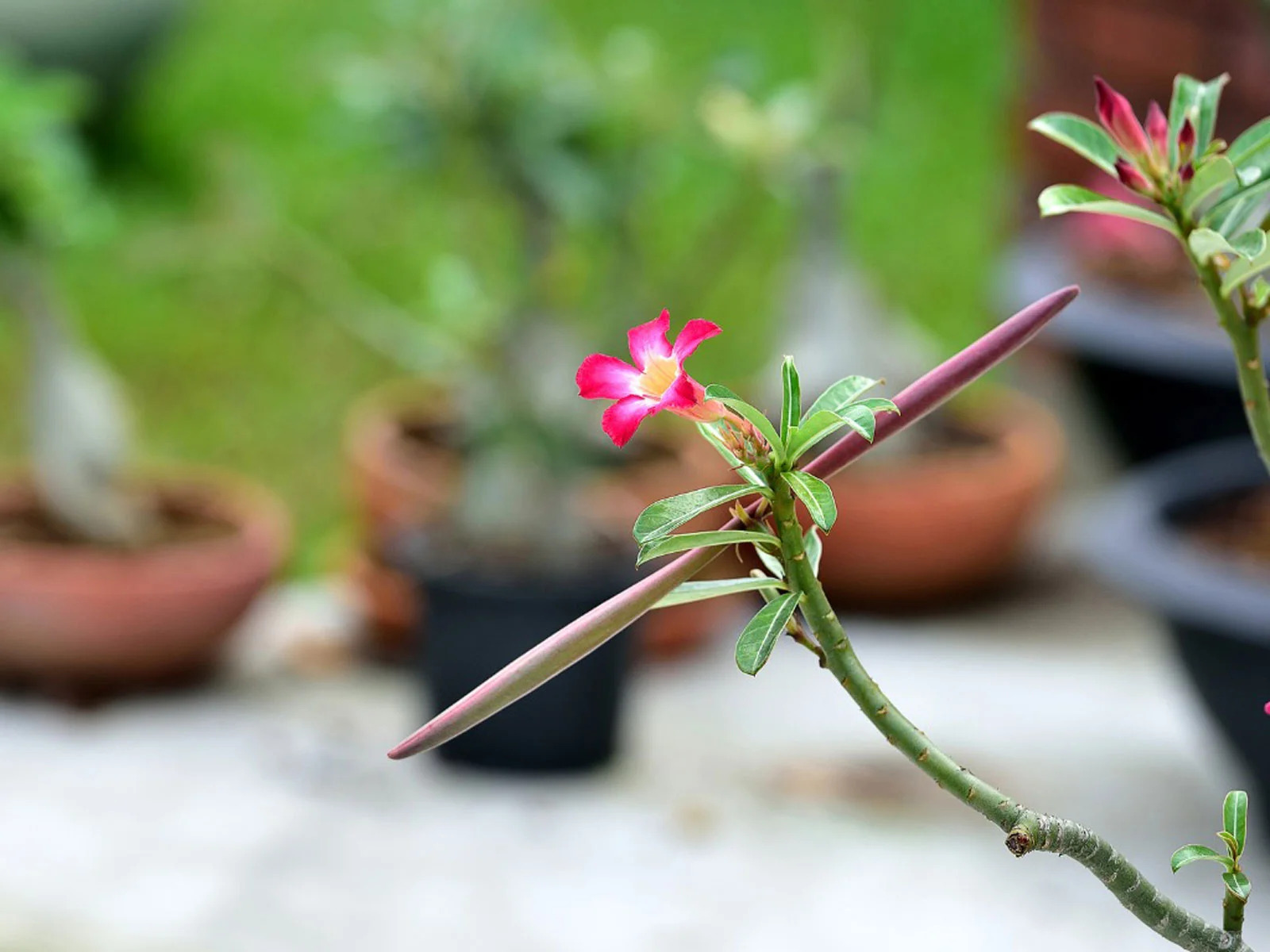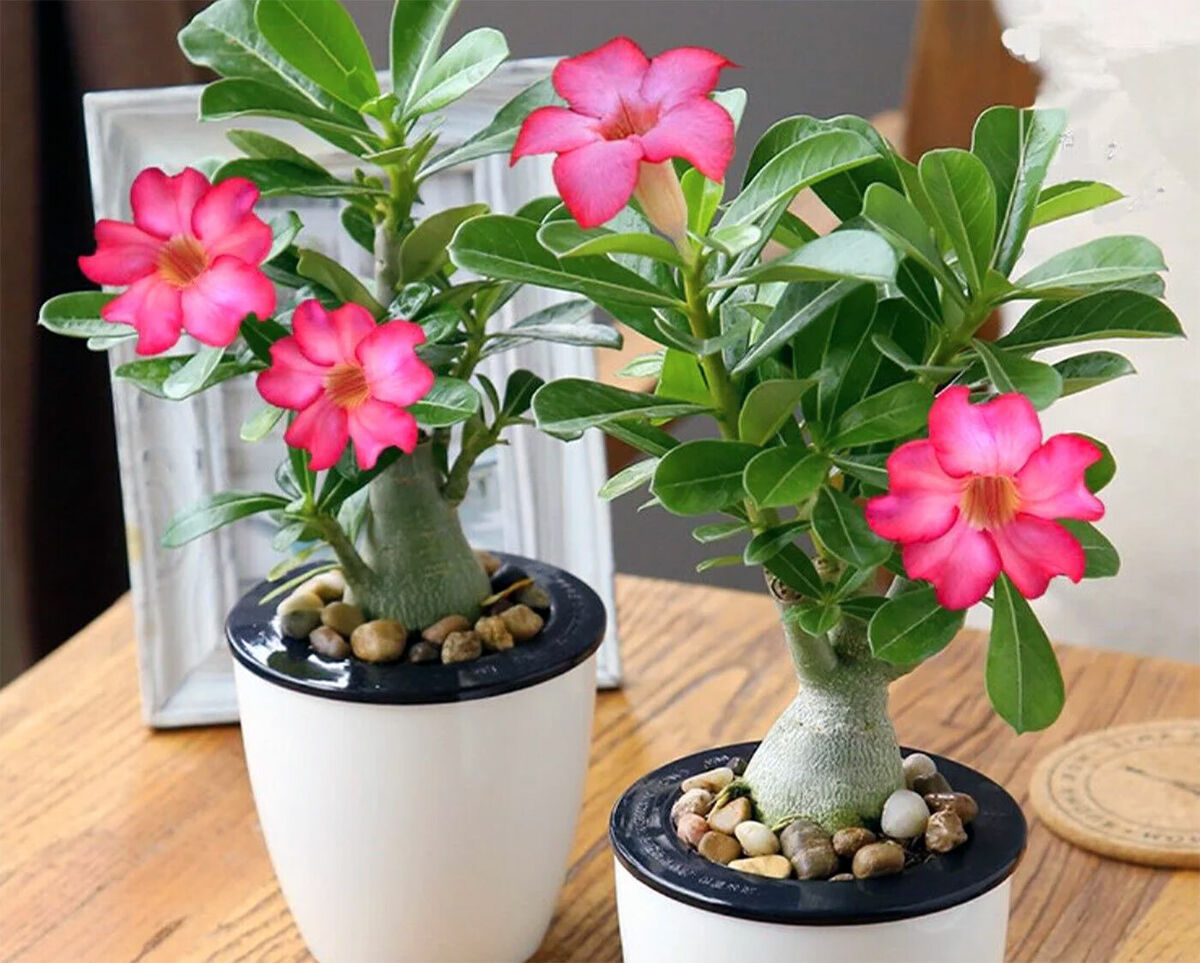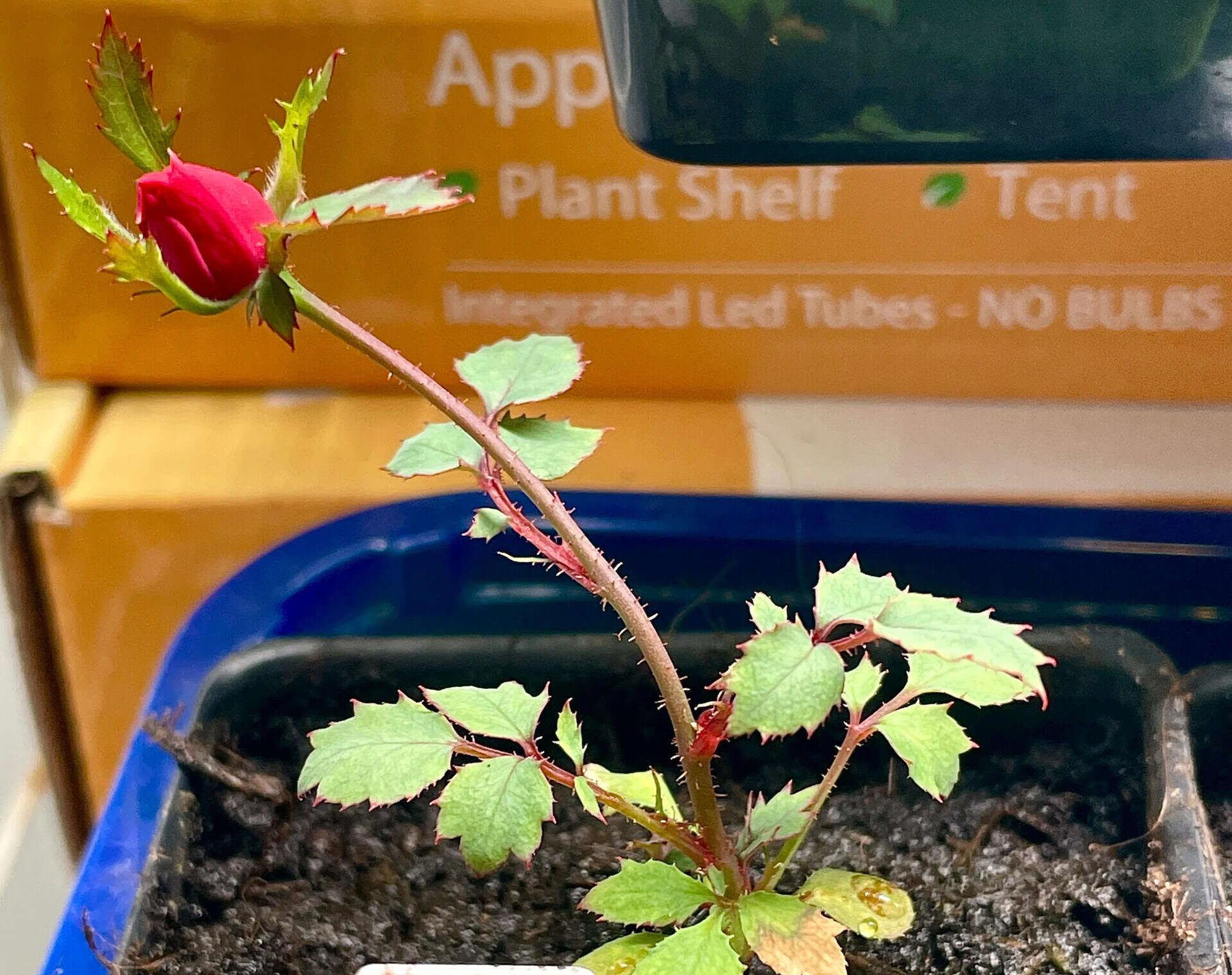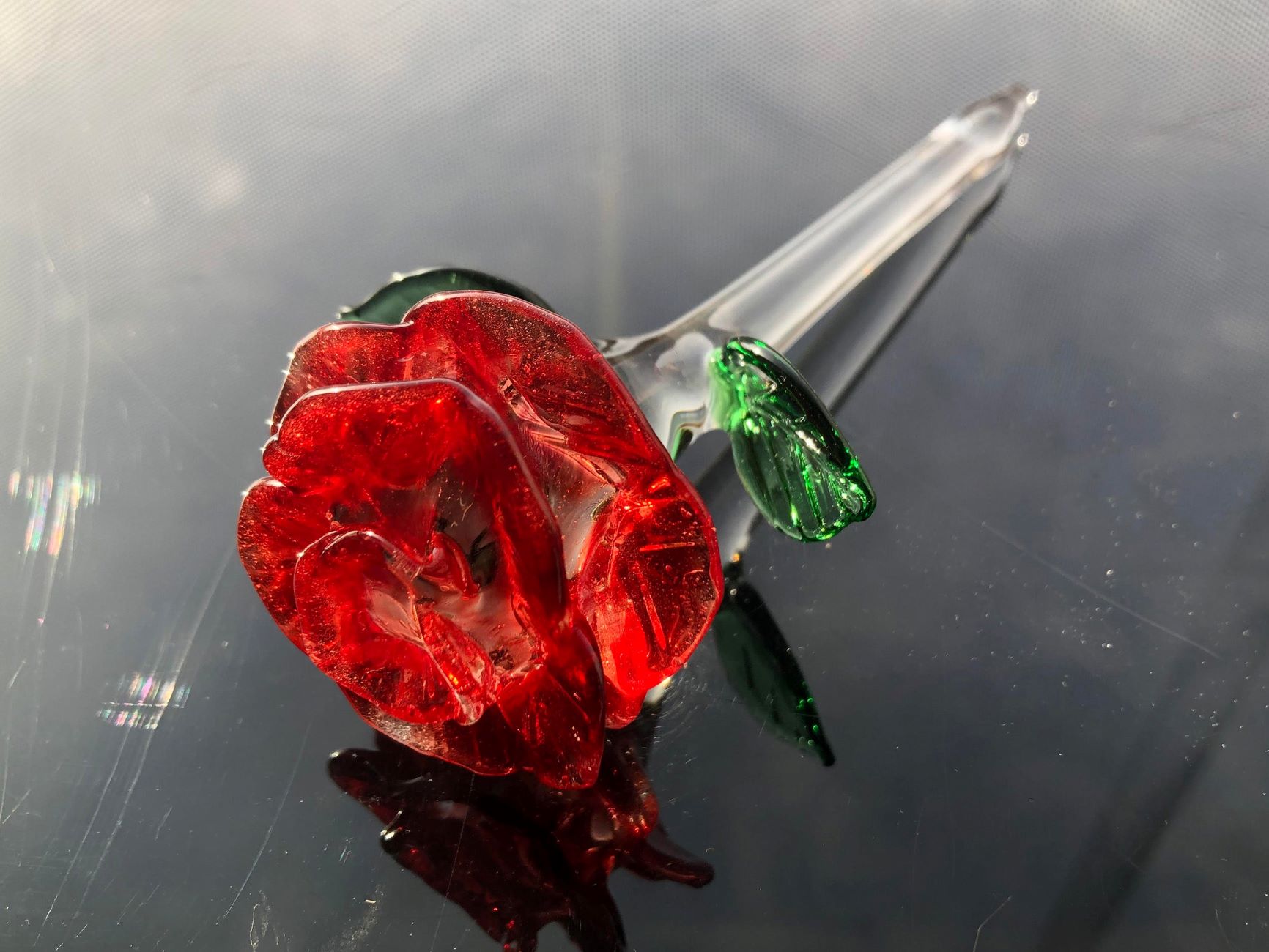

Articles
How To Store A Rose
Modified: December 7, 2023
Learn how to properly store a rose with these helpful articles. Find tips and techniques to keep your roses fresh and beautiful for longer.
(Many of the links in this article redirect to a specific reviewed product. Your purchase of these products through affiliate links helps to generate commission for Storables.com, at no extra cost. Learn more)
Introduction
Storing roses can be a fantastic way to preserve their beauty and extend their lifespan. Whether you are storing roses because you received them as a gift or you want to save them for a special occasion, proper storage is essential to ensure their longevity. In this article, we will guide you through the steps to store roses effectively and keep them looking fresh for as long as possible.
Preserving the beauty of roses requires attention to detail and careful consideration of the storage environment. By following the steps outlined in this guide, you can ensure that your roses remain vibrant and stunning even after being stored for an extended period of time. From choosing the right container to monitoring and maintaining the rose, each step is crucial in ensuring optimal storage conditions.
Before we jump into the specifics of storing a rose, it is important to note that roses are delicate flowers and require proper handling. As you go through the process of storing roses, remember to handle them gently and avoid any unnecessary damage or stress on the petals or stems.
So, if you’re ready to learn how to properly store a rose and enjoy its beauty for an extended period of time, let’s dive into the step-by-step process!
Key Takeaways:
- Preserve the beauty of roses by choosing the right container, preparing the roses, and creating an optimal storage environment. Regular monitoring and proper unwrapping ensure long-lasting, vibrant blooms.
- Master the art of storing roses to enjoy their elegance for an extended period. From careful preparation to thoughtful display, each step contributes to preserving the beauty and charm of these delicate flowers.
Read more: How To Store Dried Roses
Step 1: Choosing the Right Container
When it comes to storing roses, selecting the right container is crucial. The container you choose should provide adequate support and protection for the flowers, while also allowing for proper air circulation. Here are some key factors to consider when choosing a container for storing roses:
- Size: The container should be large enough to accommodate the rose stems without crowding or bending them. It’s best to choose a container that allows at least an inch of space around the roses to prevent them from being squished together.
- Material: Opt for a container made of a non-reactive material, such as glass or plastic. Avoid containers made of metal or clay, as they can react with the rose stems and potentially harm them.
- Shape: Select a container with a wide opening and a deep enough base to support the rose stems. This will help prevent the roses from toppling over and getting damaged during storage.
- Cleanliness: Before using a container, make sure it is clean and free from any dirt, debris, or residue. A dirty container can introduce bacteria or fungi, which can affect the roses’ freshness and longevity.
Additionally, you may consider using flower tubes or vials to hold individual rose stems. These small tubes can be filled with water, providing hydration to the roses during storage. Flower tubes are particularly useful if you plan to store roses individually or if you have limited space in your chosen container.
Once you have selected the appropriate container, it’s time to move on to the next step: preparing the roses for storage.
Step 2: Preparing the Rose
Proper preparation is key to maintaining the freshness and appearance of roses during storage. Before placing the roses in the chosen container, follow these steps to ensure they are adequately prepared:
- Trim the stems: Start by trimming the rose stems at a 45-degree angle using a sharp, clean pair of pruning shears or scissors. Cutting the stems at an angle provides a larger surface area for water absorption, allowing the roses to stay hydrated for longer.
- Remove excess foliage: Carefully remove any leaves or thorns that will be below the water level in the container. Submerged foliage can decompose and contaminate the water, leading to bacterial growth and a shorter lifespan for the roses.
- Hydrate the roses: Before placing the roses in the container, it’s beneficial to give them a quick hydration boost. Fill a clean vase or container with room temperature water and place the rose stems in the water for a few hours. This step ensures that the roses are starting their storage journey well-hydrated.
- Consider conditioning the roses: If you have some floral preservative solution on hand, it’s worth considering using it during the preparation process. Floral preservatives contain nutrients and antimicrobial agents, which help extend the lifespan of the roses. Follow the instructions on the preservative package for the appropriate dilution ratio and application method.
By properly preparing the roses, you are setting the foundation for their successful storage. These simple yet crucial steps can significantly impact the longevity and freshness of the roses, allowing you to enjoy their beauty for a longer period of time.
Once the roses are properly prepared, it’s time to move on to the next step: selecting the proper storage environment.
Step 3: Selecting the Proper Storage Environment
Creating the right storage environment is essential for preserving the quality and freshness of roses. The key factors to consider when choosing a storage location for your roses include temperature, humidity, and lighting conditions. Let’s explore each of these factors in detail:
- Temperature: Roses thrive in cool temperatures, ideally between 32-38 degrees Fahrenheit (0-3 degrees Celsius). It is important to avoid storing roses in an area that is too warm, as higher temperatures can cause the flowers to wilt and deteriorate quickly. Consider storing your roses in a refrigerator or a cool, dark room for optimal temperature control.
- Humidity: Roses prefer moderate humidity levels for storage. Aim for a humidity range of 80-90% to keep the blooms hydrated and prevent them from drying out. If the storage environment is too dry, you can place a damp paper towel or water-filled container near the roses to increase humidity levels.
- Lighting conditions: While roses need light to grow and bloom, excessive exposure to light during storage can lead to the fading of colors and the deterioration of petals. It’s best to store roses in a cool, dark environment to minimize light exposure and maintain their vibrancy.
It is important to note that certain fruits and vegetables, such as apples and bananas, release ethylene gas, which can speed up the aging process of roses. To prevent premature wilting and browning of the petals, avoid storing roses near ripening fruits or vegetables.
By carefully considering the temperature, humidity, and lighting conditions, you can create an optimal storage environment for your roses. Now, let’s move on to the next step: wrapping and securing the roses for storage.
Step 4: Wrapping and Securing the Rose
Properly wrapping and securing the roses is crucial to protect them from damage and maintain their shape during storage. Follow these steps to ensure that your roses are well-protected:
- Use floral sleeves or plastic bags: Start by gently placing each rose inside a floral sleeve or an individual plastic bag. These sleeves or bags serve as a protective barrier, preventing the roses from getting squished or damaged.
- Seal the wrapping: Once the rose is inside the sleeve or bag, carefully twist the open end and secure it with a twist tie or a rubber band. This ensures that the wrapping is sealed tightly, minimizing air exposure and maintaining the freshness of the roses.
- Create a cushion: To provide extra protection, you can insert a small piece of damp paper towel or tissue into the open end of the sleeve or bag. This creates a cushioning effect around the rose and helps to maintain its hydration during storage.
- Label the wrapping: It’s a good idea to label the wrapping with the name of the rose variety or any other relevant information. This will make it easier for you to identify the roses later, especially if you are storing different varieties or planning to store them for an extended period.
After wrapping and securing each rose individually, you can group them together in your chosen storage container. Make sure they are positioned upright and have enough space around them to avoid crushing or bending. Take extra care when placing or arranging them to prevent any damage to delicate petals or stems.
Now that your roses are wrapped and secured for storage, let’s move on to the next step: finding the ideal location for storage.
Store roses in a cool place away from direct sunlight and drafts. Trim the stems and change the water every 2-3 days to keep them fresh longer.
Read more: How To Store Rose Petals
Step 5: Finding the Ideal Location for Storage
After preparing and wrapping the roses, it’s time to find the perfect location for storing them. This location should meet specific criteria to ensure the roses remain fresh and well-preserved. Consider the following factors when choosing the ideal storage location:
- Temperature control: Look for a place that maintains a cool and consistent temperature within the recommended range of 32-38 degrees Fahrenheit (0-3 degrees Celsius). A refrigerator or a cool, dark room can provide the necessary temperature control.
- Avoidance of direct sunlight: Exposure to direct sunlight can cause the roses to wilt and fade quickly. Choose a storage location away from windows and direct sources of light to prevent unnecessary damage to the flowers.
- Avoidance of ethylene-producing items: As mentioned earlier, fruits and vegetables release ethylene gas, which accelerates the aging process of flowers. To keep your roses fresh for longer, ensure that they are stored away from any ripening fruits or vegetables.
- Humidity considerations: Ideally, the storage location should have moderate humidity levels, preferably around 80-90%. This helps to keep the roses hydrated and prevents them from drying out. If the humidity is too low, you can place a tray of water or a humidifier nearby to increase moisture levels.
Remember to choose a location where the roses will not be disturbed or bumped, as this can cause damage to the delicate petals and stems. It’s also essential to ensure proper air circulation in the storage area to prevent the buildup of moisture or the growth of mold.
By finding the ideal location that meets these criteria, you can maximize the longevity of your stored roses and keep them looking fresh and beautiful for an extended period.
Now that you have found the perfect storage location, let’s move on to the next step: monitoring and maintaining the roses during storage.
Step 6: Monitoring and Maintaining the Rose
Monitoring and maintaining the condition of the roses during storage is crucial to ensure their longevity. Follow these steps to keep a close eye on your stored roses and maintain their freshness:
- Regularly check the roses: Make it a habit to check on the roses periodically, especially during the first few days of storage. Look for any signs of wilting, mold, or petal discoloration, and address any issues promptly. Removing any wilted or damaged roses can prevent the spread of bacteria or fungi to the rest of the batch.
- Adjust humidity levels: If you notice that the storage environment is too dry or the roses are showing signs of dehydration, you can increase humidity by misting the air around them with a spray bottle or adding a tray of water nearby. Avoid spraying directly onto the roses to prevent moisture damage.
- Check for condensation: Condensation can occur inside the wrapping or on the container if there is a significant difference in temperature between the storage environment and when the roses are taken out. If you notice excessive condensation, gently remove the wrapping or container lid to allow air circulation and prevent moisture buildup.
- Address any issues promptly: If you notice any issues such as mold, rot, or unusual odors, take immediate action to address the problem. Remove the affected roses, clean the container, and consider adjusting the storage conditions as needed.
- Ensure proper air circulation: Proper air circulation is vital to prevent the growth of mold or other bacteria. If you notice any stale or musty odors, it may be an indication of poor air circulation. Consider moving the roses to a location with better airflow or adjusting the storage setup.
By actively monitoring the condition of the roses and addressing any issues promptly, you can significantly extend their lifespan and maintain their visual appeal throughout the storage period.
Now that you know how to monitor and maintain your roses during storage, let’s move on to the final step: unwrapping and displaying the roses.
Step 7: Unwrapping and Displaying the Rose
After ensuring that your roses have been stored properly and maintained their freshness, it’s finally time to unwrap and display them. Here are the steps to follow when unwrapping and displaying your roses:
- Gently remove the wrapping: Carefully untwist the twist ties or remove the rubber bands securing the wrapping around each rose. Take your time to avoid damaging the petals or stems.
- Inspect the roses: Once the wrapping is removed, carefully inspect each rose for any signs of damage or wilting. Remove any roses that have deteriorated and set them aside.
- Trim the stems: Trim the rose stems once again, this time cutting them at a 45-degree angle. Trimming the stems helps to promote water absorption and keeps the roses fresh for a longer period.
- Arrange the roses: Choose a clean vase or container and fill it with fresh, room temperature water. Arrange the roses in the vase, making sure each stem is submerged in water. You can also add flower food to the water to prolong the life of the roses.
- Select a display location: Choose a spot for your vase of roses where they can be enjoyed and admired. Avoid placing them in direct sunlight or near sources of heat, as this can cause the flowers to wilt more quickly.
- Change the water regularly: To keep your roses looking their best, change the water in the vase every two to three days. Trim the stems slightly each time to allow for better water absorption.
- Enjoy the beauty of your roses: Now that your roses are unwrapped, arranged, and displayed, take the time to appreciate their beauty and fragrance. With proper care and attention, your stored roses can continue to brighten up your space for several more days.
Remember, the lifespan of your displayed roses will depend on various factors such as the rose variety, storage conditions, and handling. Enjoy their beauty while they last and consider preserving the petals or drying the roses as a keepsake.
Congratulations! You have successfully completed the process of storing roses and bringing them back to life for display. With the right techniques and care, your roses can retain their beauty and fill your space with elegance and charm.
As we conclude this guide, we hope you found it helpful in mastering the art of storing roses. Now go ahead and enjoy the vibrant and long-lasting beauty of your preserved roses!
Conclusion
Storing roses requires careful attention to detail and adherence to specific steps to ensure the preservation of their beauty and freshness. By following the comprehensive guide outlined in this article, you can confidently store your roses and enjoy their vibrant blooms for an extended period.
From choosing the right container and preparing the roses to selecting the ideal storage environment and properly wrapping them, each step plays a crucial role in maintaining the quality and longevity of the flowers. Monitoring and maintaining the roses during storage is essential, as is the final step of unwrapping and displaying them to be admired.
Remember to handle the roses gently throughout the entire process, including trimming the stems, removing excess foliage, and securely wrapping them. Pay careful attention to the storage environment, ensuring the temperature, humidity, and light conditions are optimal. Regularly check the roses for any signs of wilting or damage and address any issues promptly.
By following these steps, you can extend the lifespan of your roses and enjoy their beauty and fragrance for a longer period. Displaying them in a suitable location and changing the water regularly will further enhance their appeal. As with any floral arrangement, the longevity of your roses will depend on various factors, so be mindful of the care required.
Whether you are storing roses as a special keepsake, preserving a gift, or preparing for a special occasion, proper storage techniques are essential. With the knowledge gained from this guide, you can confidently store your roses and appreciate their beauty long after they have been cut.
So, get ready to embark on the journey of storing roses and relishing their charm for days to come. With the right techniques and care, you can create a lasting impression with these delicate and captivating flowers.
Frequently Asked Questions about How To Store A Rose
Was this page helpful?
At Storables.com, we guarantee accurate and reliable information. Our content, validated by Expert Board Contributors, is crafted following stringent Editorial Policies. We're committed to providing you with well-researched, expert-backed insights for all your informational needs.















0 thoughts on “How To Store A Rose”